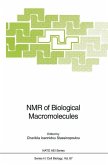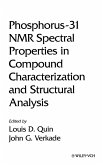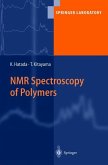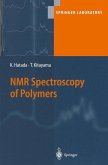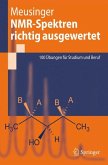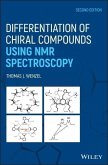This unique book enables the reader to identify the main factors governing the phosphorus chemical shift values in the 31 P-NMR spectrum and to make an educated guess as to where the phosphorus resonance(s) of a given target compound can be expected.
Nuclear Magnetic Resonance is a powerful tool, especially for the identification of 1 13 hitherto unknown organic compounds. H- and C-NMR spectroscopy is known and applied by virtually every synthetically working Organic Chemist. Con- quently, the factors governing the differences in chemical shift values, based on chemical environment, bonding, temperature, solvent, pH, etc. , are well understood, and specialty methods developed for almost every conceivable structural challenge. Proton and carbon NMR spectroscopy is part of most bachelors degree courses, with advanced methods integrated into masters degree and other graduate courses. In view of this universal knowledge about proton and carbon NMR spectr- copy within the chemical community, it is remarkable that heteronuclear NMR is still looked upon as something of a curiosity. Admittedly, most organic compounds contain only nitrogen, oxygen, and sulfur atoms, as well as the obligatory hydrogen and carbon atoms, elements that have an unfavourable isotope distribution when it comes to NMR spectroscopy. Each of these three elements has a dominant isotope: 14 16 32 16 32 N (99. 63% natural abundance), O (99. 76%), and S (95. 02%), with O, S, and 34 14 S (4. 21%) NMR silent. N has a nuclear moment I = 1 and a sizeable quadrupolar moment that makes the NMR signals usually very broad and dif cult to analyse.
Nuclear Magnetic Resonance is a powerful tool, especially for the identification of 1 13 hitherto unknown organic compounds. H- and C-NMR spectroscopy is known and applied by virtually every synthetically working Organic Chemist. Con- quently, the factors governing the differences in chemical shift values, based on chemical environment, bonding, temperature, solvent, pH, etc. , are well understood, and specialty methods developed for almost every conceivable structural challenge. Proton and carbon NMR spectroscopy is part of most bachelors degree courses, with advanced methods integrated into masters degree and other graduate courses. In view of this universal knowledge about proton and carbon NMR spectr- copy within the chemical community, it is remarkable that heteronuclear NMR is still looked upon as something of a curiosity. Admittedly, most organic compounds contain only nitrogen, oxygen, and sulfur atoms, as well as the obligatory hydrogen and carbon atoms, elements that have an unfavourable isotope distribution when it comes to NMR spectroscopy. Each of these three elements has a dominant isotope: 14 16 32 16 32 N (99. 63% natural abundance), O (99. 76%), and S (95. 02%), with O, S, and 34 14 S (4. 21%) NMR silent. N has a nuclear moment I = 1 and a sizeable quadrupolar moment that makes the NMR signals usually very broad and dif cult to analyse.
Aus den Rezensionen:
"... ein kompaktes Lehrbuch zur Phosphor-31-NMR-Spektroskopie. Aufbauend auf Grundwissen, das der Leser zu NMR ... haben muss, werden ... die spezifischen Eigenheiten des Phosphorkerns erläutert. ... Das Gewicht des Buches liegt eindeutig auf einer klaren und exakten, gut lesbaren Einführung zu den unterschiedlichsten Phosphorhaltigen organischen Verbindungen. Hier muss anerkannt werden, dass der Autor eine grosse Bandbreite an Strukturen und Komplexen und die Auswirkungen auf die chemische Verschiebung sehr gut bespricht. ... Die unterschiedlichen Kopplungen werden ... gut erklärt und Werte für Kopplungen im Text erwähnt ..." -- http://www.organische-chemie.ch/buecher/besprechungen/3540791175.shtm
"... ein kompaktes Lehrbuch zur Phosphor-31-NMR-Spektroskopie. Aufbauend auf Grundwissen, das der Leser zu NMR ... haben muss, werden ... die spezifischen Eigenheiten des Phosphorkerns erläutert. ... Das Gewicht des Buches liegt eindeutig auf einer klaren und exakten, gut lesbaren Einführung zu den unterschiedlichsten Phosphorhaltigen organischen Verbindungen. Hier muss anerkannt werden, dass der Autor eine grosse Bandbreite an Strukturen und Komplexen und die Auswirkungen auf die chemische Verschiebung sehr gut bespricht. ... Die unterschiedlichen Kopplungen werden ... gut erklärt und Werte für Kopplungen im Text erwähnt ..." -- http://www.organische-chemie.ch/buecher/besprechungen/3540791175.shtm


